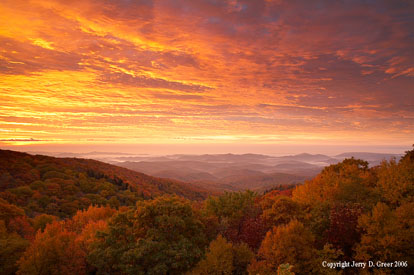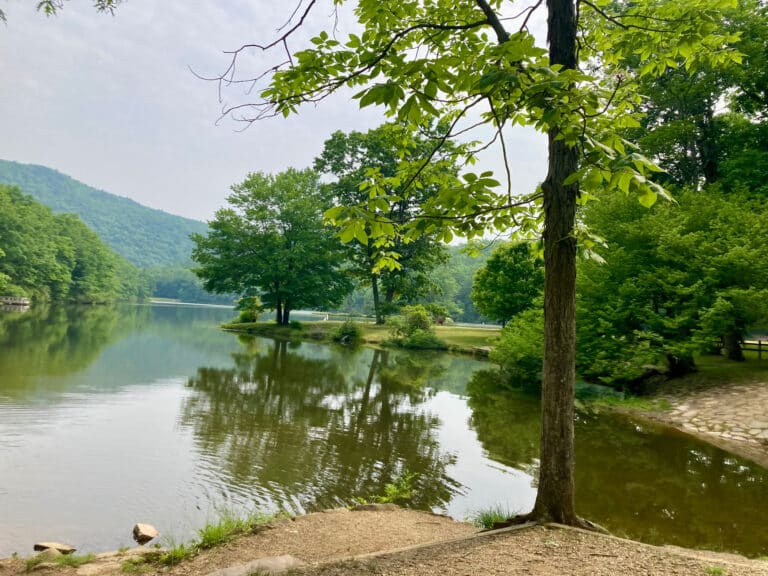
BY GRAHAM AVERILL
Click here for a Map
How much is the view of a forest worth? If you’re talking about the view of the Globe Forest in North Carolina’s High Country, it’s worth hundreds of millions. The 25,000-acre tract of land is an integral part of the sweeping views that tourists see from Grandfather Mountain, the town of Blowing Rock, and the Blue Ridge Parkway. The Blue Ridge Parkway alone brings $150 million annually to Watauga County, and the Globe Forest is a significant chunk of the quintessential mountain vistas that tourists come to see.
Not surprisingly, when the U.S. Forest Service proposed logging the area in 2006, the local community immediately balked. The timber sale was proposing to plunder their most valuable economic resource. In response, the town council of Blowing Rock proposed turning the Globe and its surrounding ecosystem into the Grandfather National Scenic Area (GNSA), a federal designation that would preserve the viewshed by permanently protecting the 25,000-acre forest from commercial logging.
“The GNSA was originally proposed as an environmental initiative, but really, it’s a matter of economic development, which is why it has such massive support from the community,” says Chris Joyell, campaign coordinator for Wild South, the environmental organization that’s putting its weight behind the proposal.
Establishing the Grandfather National Scenic Area would take an act of Congress, and currently, there is no bill proposed in the House to that end. In fact, the two Congressional delegates who represent the districts of the proposed scenic area—Virginia Foxx (R) and Patrick McHenry (R)—don’t currently support the designation. They’ve refused to introduce a scenic area bill, even though the designation has massive support among their voters. However, the two candidates running against the incumbents in November—Roy Carter (D) and Daniel Johnson (D)—have fallen all over themselves to support the scenic area. Carter has even said it would be the first bill he introduces if he’s elected to Congress.
“We have a lot of momentum right now,” Joyell says. “The congressional sponsor is the domino we need to fall. It’s a bill that would cost the taxpayers absolutely nothing while bringing money and jobs to the region.”
Meanwhile, the U.S. Forest Service is moving forward with the proposed Globe timber sale, although they have softened the scope of the logging within that particular project. The original Globe timber sale called for 212 acres of logging, 100 acres of which focused on stands of old growth. The Forest Service has removed the old growth from the sale and is promising to keep the visual impacts of the logging at a minimum.
The local community, however, isn’t quick to believe the promises of the Forest Service. Fifteen years ago, the Forest Service clearcut large portions of the Globe and surrounding areas, drastically marring the views seen from Blowing Rock.
“I remember hearing tourists refer to the last timber cut in the Globe as ‘a bad haircut,’” says John Wilson, whose family owns the actual Blowing Rock. “Tourism has already been hit hard by high gas prices and tough economic times, and tension between the Forest Service and the High Country community rise when a timber cut is proposed in an area like this where tourism and visual quality are so important.”
Terry Seyden, information officer for the U.S. Forest Service, has assured the community that the clear-cutting that so many fear is no longer a common practice of the Forest Service in sensitive areas like the Globe. “This project calls for small cuts, 11 acres in size, where we leave enough trees so that in a lot of cases, you can’t even tell where we’ve logged. With our timber practices now, the cuts blend much better than they used to. And they address the needs of the overall forest health in terms of wildlife habitat creation and wildland fire risk reduction.”
What the Forest Service’s logging practices don’t take into account, however, is recreation. Currently, there’s only one official trail that explores the 25,000 acres in question. An expanded trail system would draw even more tourism dollars to the High Country.
The Forest Service says it is open to maximizing the recreation potential in the area. “We want to have a discussion about the existing recreation opportunities and what possibilities we have to enhance recreation in that area. We have a constrained budget, but any time we can work with organized groups to help meet those recreation needs, everyone wins.”







